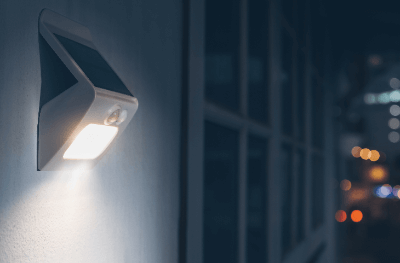What Is a Motion Sensor?
 A motion sensor is a detection device that senses the movement of an object as a physical quantity and outputs a signal.
A motion sensor is a detection device that senses the movement of an object as a physical quantity and outputs a signal.
They consist of a combination of an acceleration sensor and an angular rate sensor.
Uses of Motion Sensors
Motion sensors are used in a wide range of applications, from consumer products to industrial equipment.
Examples of use are listed below:
- Automatic doors and ticket gates
- Smartphone and game console controllers
- Automatic faucets and automatic flashing lights
- Automatic temperature monitors
- Drones
Motion sensors can be used in a wide range of applications because they can detect human movement without contact.
Principle of Motion Sensor
The motion of an object in three-dimensional space can be described by acceleration and angular velocity in three axes. Motion sensors use this mechanism to detect the motion of an object. Acceleration sensors and angular rate sensors are mainly used, at least one for each of the three axes.
The method and type of sensor employed varies with the design of each sensor. They can have a variety of characteristics, including those that capture overall movement and those that capture detailed movement at close range.
Motion sensors that detect living organisms without contact mainly use radiation temperature sensors and photoelectric sensors, among others. Sometimes referred to as a motion sensor, the most common type of sensor is one that detects temperature changes.
Other Information on Motion Sensors
1. Motion Sensor Market Trends
Against the backdrop of the spread of new coronavirus infections, the motion sensor market is expanding. According to a study by a marketing firm, the market size is expected to grow from $5.7 billion in FY 2019 to approximately $9.3 billion in FY 2025.
Photoelectric sensors make up the majority of the motion sensor market. Among these, demand for CCD and COMS image sensors are likely to grow due to their use in drones and robots, as well as in accident prevention with in-vehicle cameras.
Motion sensors are also being introduced in factories, where the IoT is gaining momentum. They are used to improve manual processes that are not suitable for automation by measuring human movement, and in systems that automatically inspect products and parts in the process of manufacturing.
2. Security of Motion Sensors
In 2017, motion sensor security issues were raised by universities in the United States and the United Kingdom. Michigan State University in the US pointed out that accelerometers can malfunction when given certain sound waves. According to published information, some sound waves can intentionally cause a traffic accident.
The University of Newcastle in the UK also pointed out the possibility of personal information being extracted from a smartphone motion sensor. It appears that passwords and unlock PINs can be identified based on the timing of tapping for text input and the tilt of the smartphone.
If a web browser is given permission to access the motion sensor, information could be stolen simply by visiting malicious sites. Therefore, caution should be exercised when using smartphones.